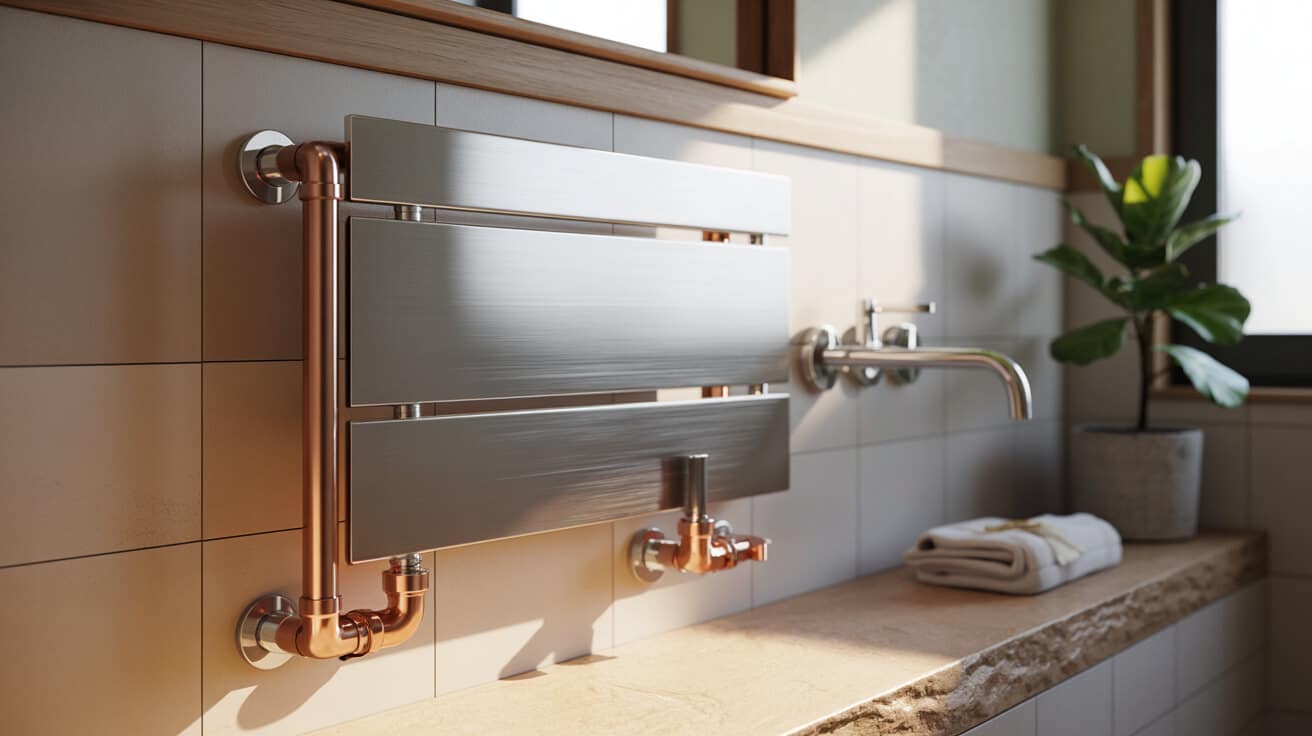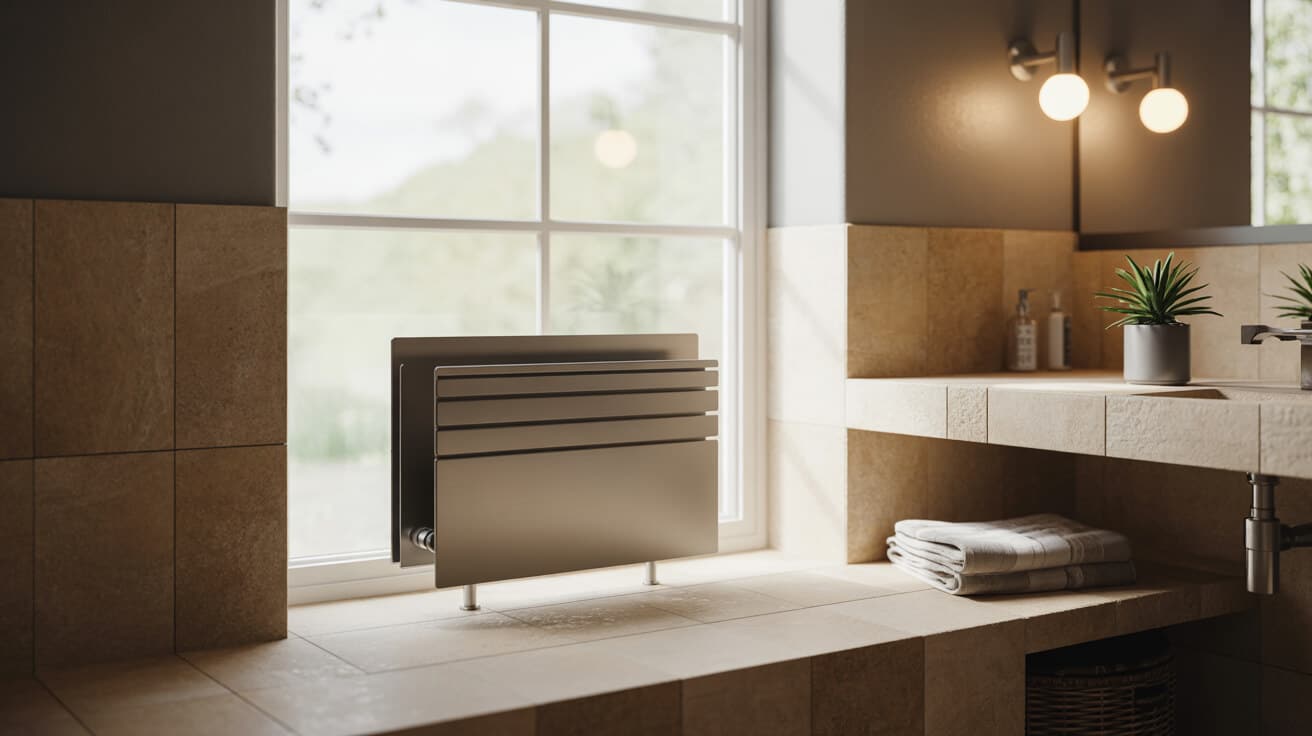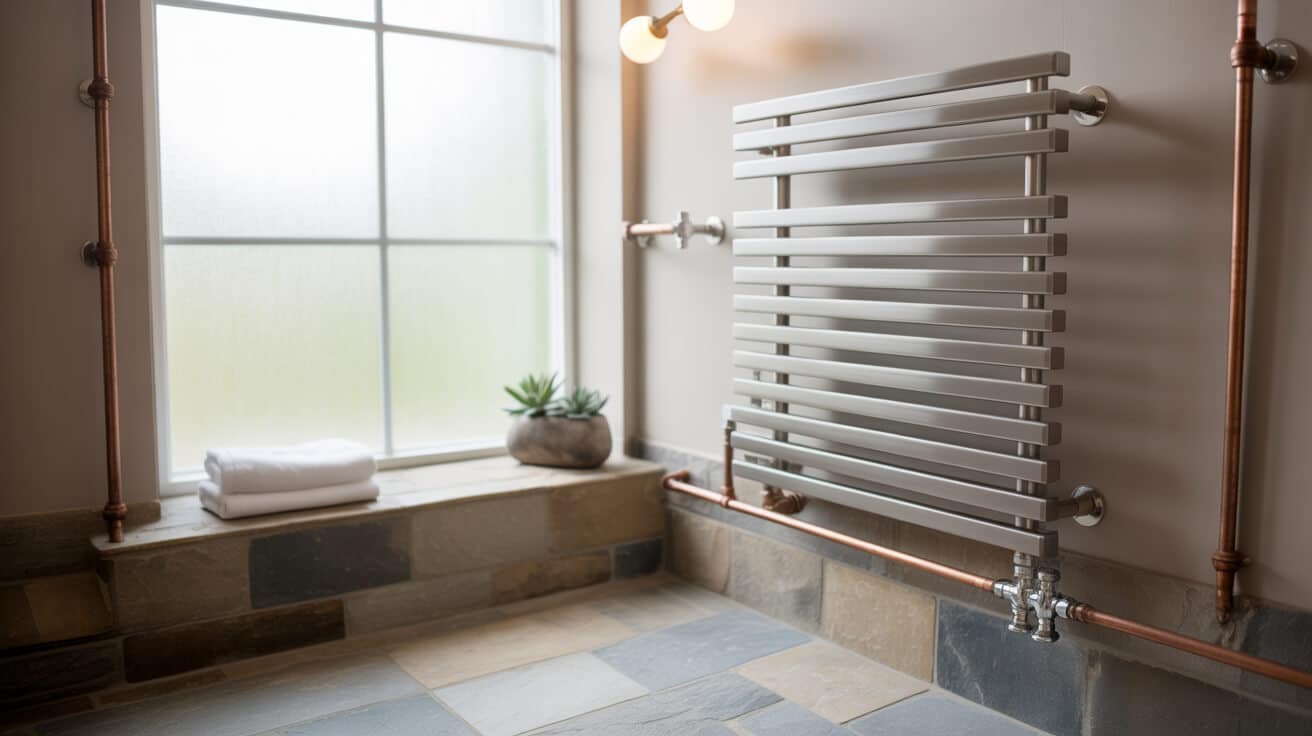Renovating plumbing infrastructure within established homes transforms legacy spaces, aligns utility networks with contemporary lifestyles, and underpins the comfort and safety of daily routines. The process demands an orchestration of technical choices, project sequencing, stakeholder consultation, and regulatory scrutiny, all calibrated to balance disruption, cost, and long-term maintenance. Your choices as a property owner, landlord, or manager dictate the reliability, efficiency, and resale appeal of the renovated property, while our services as a certified plumbing and heating company ensure that every installation meets stringent safety and legal thresholds.
Etymology or name origin
The term “plumbing” finds its roots in the Latin word plumbum, meaning lead, a reference to ancient uses of lead piping that shaped water delivery infrastructures for millennia. Terminologies such as “first fix” and “second fix” emerged from British building trades to delineate sequential installation phases—initial rough-in pipework and concealed services, followed by visible fixtures and operational calibration. Contemporary terminology, including “unvented cylinder,” “combi boiler,” and “pressurised system,” reflects the sector’s adaptation to regulatory and technological innovations over the twentieth and twenty-first centuries.
Overview and context
Modern plumbing solutions for renovation projects are distinguished by the adaptation of new technologies, evolving regulation, and the requirement to work within, around, or above existing structures and materials. Unlike new construction, renovation plumbing must integrate with a property’s inherited quirks—spatial constraints, access limitations, and interaction with occupied rooms or historical construction. The project typically involves collaboration between your design teams, main contractor, and certified plumbing company, ensuring that approved processes, accredited component selection, and compliance with regional water and energy standards are hardwired into each phase. Innovation, system efficiency, and living comfort underline the critical role of expertly managed plumbing renovation.
History
Early domestic plumbing in renovation
Implementation of water management in existing European homes accelerated with the migration from ad-hoc wells and communal systems to individual, piped water supplies. Upgrades to sanitation and domestic water provision, often constrained by the structural limits of historic dwellings, spurred the evolution of flexible pipe routing strategies and local adaptation. Lead, cast iron, and clay dominated early retrofits, chosen for their malleability or local availability.
Industrial emergence
Regulation and high-density urban construction in the nineteenth and early twentieth centuries drove the mass adoption of copper for its durability and resistance to corrosion. Mechanisation facilitated wider network installation, while a public health movement around clean water and effective waste removal established plumbing as a regulated profession. Emergence of standards for fitting materials, pipe sizing, and drain gradients transformed the field from improvisation to codified engineering practice.
Contemporary evolution
Introduction of plastics—cross-linked polyethylene (PEX), polybutylene (PB), and MDPE—expanded the trade’s adaptive toolkit and supported affordable, rapid installation in tight or concealed spaces. Regulatory frameworks such as the UK Building Regulations, WRAS approval, and Water Supply (Water Fittings) Regulations 1999 now govern permissible methods and materials. The modern era emphasises multi-zoned heating, home automation, accessibility, and the delivery of sustainability goals. Trade associations and training programmes professionalise industry practice, driving the integration of advanced safety features and customer-focused guarantees.

Core concepts and components
Pipework and routing
Efficient renovation plumbing relies upon the selective replacement and re-routing of pipework using materials that balance robustness, ease of fitting, and compatibility with water chemistry. Copper remains favoured for exposed runs or high-temperature circuits, while PEX and PB enable rapid, concealed installation in walls, floors, or ceilings. Techniques for minimising dead legs, providing isolation points at all critical junctions, and incorporating pressure limiting valves enhance both longevity and operational safety. Manifolds and zoning valves allow for decentralised control over water supply and temperature in multi-bathroom or open-plan properties.
Water supply systems
Supply network configuration determines flow reliability, pressure management, and future serviceability. Direct mains-fed systems eliminate the need for loft tanks, increase water quality, and support higher-performance fixtures, while indirect configurations maintain buffer capacity and can moderate supply interruptions. Pressure balancing, prevention of backflow through double-check valves, and compliance with WRAS regulations constitute essential safeguards.
Fixtures and appliances
Choices in fixtures span digital and thermostatic showers, low-flow water closets, sensor-activated taps, and integrated kitchen units. Every component must meet installation and certification standards; poor selection risks functional issues or compliance failure. User-specific needs drive the uptake of accessible fittings, anti-scald features, and appliance integration that enables smarter, more sustainable use of resources.
Heating integration
Central heating’s intersection with renovation plumbing delivers efficiency and control if engineered with precision. System upgrades involve the installation or refurbishment of radiators, underfloor heating circuits, cylinder tie-ins, and heat interface units. Modern zoning and thermostatic radiator valves (TRVs) maximise comfort while managing system energy profiles. Our services leverage advanced balancing and smart controls to synchronise heating systems with your layout and lifestyle objectives.
Waste and drainage systems
Redesigned kitchens, bathrooms, and utility areas often trigger re-routing or capacity upgrades to drainage networks. Soil stacks, waste pipes, and venting lines must be sized for flow and blockages avoided through appropriate gradient, smooth-bore pipework, and trap technologies. Air admittance valves, backflow preventers, and rodding eyes play a critical role in both compliance and maintainability. Greywater recycling, rainwater harvesting, and separation systems introduce further layers of technical sophistication and potential regulatory scrutiny.
Compliance and safety elements
WRAS-approved fittings, certified backflow devices, thermostatic mixing valves, and visible discharge routes are baseline expectations for regulatory compliance. Attention to Legionella risk management—particularly for stored water systems—and safe system commissioning underpins occupant protection and insurance prerequisites. Documentation, including as-built schematic diagrams and full compliance logs, closes the loop on project performance.
Methodologies and procedures
Survey and assessment
A detailed assessment of the existing system, including pipe material analysis, water quality testing, and hydraulic performance mapping, empowers accurate estimation and fixture specification. Stakeholder consultation determines usage profiles, risk tolerances, and project sequencing to minimise downtime within your home or property portfolio.
Isolation and strip-out
Implementation starts with system isolation, draining, and staged removal of obsolete or non-compliant elements. Strict adherence to safety protocols for hazardous material handling (lead, asbestos) and service disconnection is critical.
First fix installation
New pipe runs, service entry penetrations, and key supply junctions are set during first fix, before completion of structural or surface finishes. Integration of manifolds, main valves, and trunk circuits at this stage determines future accessibility and safety.
Pressure testing and quality assurance
All new installations are subject to pressure and continuity testing. Use of manometers, test pumps, and leak detection fluids, documented in compliance logs, assures quality and mitigates unwelcome surprises after project closure.
Second fix and commissioning
Upon completion of finishes, fixtures and appliances are set, connected, and programmed. User interfaces are demonstrated and service documentation is reviewed with stakeholders for transparent maintenance understanding.
Compliance documentation and handover
The project culminates in formal sign-off, with notification to regulatory authorities and full handover of certifications: Building Regulations, G3 for unvented, CP12 where gas is present, and appropriate WaterSafe or WRAS component verification. Comprehensive user manuals and maintenance logbooks enable you to safeguard your investment and ensure warranty continuity.
Classifications and variants
System types
- Pressurised, unvented systems offer superior flow for multi-outlet dwellings and support specialist installations, such as high-performance multiple showers.
- Gravity-fed, vented systems persist in legacy renovations for their resilience and suitability where roof tanks provide zoning.
- Combination boilers integrate water heating and distribution without storage, affording compactness but imposing simultaneous use constraints.
- Hybrid and sustainable variants, including rainwater or greywater harvesting, increasingly shape the eco-upgrade segment of the market.
Installation approaches
Full renewal—removal and replacement of all legacy systems—delivers maximum functional and lifespan benefits but is often scheduled alongside major structural changes. Partial or zone-by-zone upgrades allow staged investment, continuous occupancy, and incremental modernization. Specialist variants address accessibility, energy-saving, or visual integration, and must always be matched to the regulatory context.
Standards, regulation, and compliance
Building regulations
Plumbing renovations are tightly governed by the UK’s Building Regulations. Part G covers sanitation and water safety; Part H governs drainage and waste management; Part L addresses energy efficiency; Part P covers associated electrical works. Deviation can void warranties, expose owners to penalties, or compromise property value.
Water supply and fittings
The Water Supply (Water Fittings) Regulations 1999, enforced through WRAS and WaterSafe schemes, specify material, installation, and testing standards. Only certified fittings and qualified trades are permitted for regulated works. Notification, periodic inspection, and remedial action standards are enforced by statutory agencies and local water suppliers.
Certifications and legal requirements
G3 certification is mandatory for installation or modification of unvented cylinder systems. Gas-related work demands Gas Safe registration and annual CP12 certification for rentals. All notifiable work must be properly logged with building control, and certification must be provided to maintain property cover and legal compliance.
Documentation and handover obligations
Accurate system schematics, commissioning logs, and as-built records are essential for future warranty, troubleshooting, or compliance audits. Landlords and managing agents must retain documentation for all regulated works, facilitating smooth occupant changeovers and regulatory inspections.

Tools and materials
Core hand tools
Pipe cutting and preparation (saws, tube cutters, benders), jointing (press-fit guns, soldering sets), and threading tools remain essential. Hand tools are supplemented with power-assisted implements for large-scale jobs or challenging access contexts.
Diagnostic equipment
Pressure test pumps, manometers, moisture metres, and inspection cameras allow precise system analysis and troubleshooting. Digital measuring devices increase diagnostic accuracy and are increasingly required for regulatory submission.
Materials and fittings
Material selection hinges on regional water characteristics, installation method, and regulatory approvals. Copper, PEX, PB, and MDPE remain standard for mains, internal supply, and specialist applications. Fittings must be WRAS-approved; insulation maintains thermal performance and aids compliance with energy codes. Advanced valves, secondary circulation, and digital flow control augment new and existing systems for superior user experience.
Stakeholders and project roles
Customers
- Homeowners seeking to modernise, extend, or retrofit properties for enhanced utility, value, and compliance.
- Landlords demonstrating regulatory compliance and delivering amenities to attract or retain tenants.
- Property managers and agents coordinating upgrades across multi-unit portfolios or community developments.
Trade participants
Certified and insured engineers provide the technical backbone of compliant works. Apprentices support delivery as part of regulated training pathways. Project managers—often the main contractor—oversee sequencing, scheduling, and performance. Digital and product suppliers enable bespoke system specification and support troubleshooting in the field.
Regulatory and assurance
Inspectors, warranty providers, and local authorities safeguard standards, provide technical dispute resolution, and enforce public health protocols. Your engagement with a certified provider such as Plumbers 4U ensures transparent, reliable coordination with all stakeholders.
Performance metrics and typical measurements
System-specific data
- Flow rate at outlets (litres per minute)
- Pressure at key nodes (bar or kPa)
- Energy and water use (monitored via EPC and SAP rating tools)
- Thermal performance of pipe insulation
Process and compliance indicators
- Completion of compliance documentation and maintenance logs
- commissioning and handover verification
- Post-project user survey and defect period callout logs
Table: Example Performance Benchmarks
| Parameter | Typical Range | Measurement Tool |
|---|---|---|
| Flow Rate | 8–15 litres/minute | Flow Cup, Digital Metre |
| Pressure (Mains) | 2–5 bar | Manometer, Pressure Gauge |
| Pipe Insulation Value | >0.035 W/m·K | Manufacturer’s Data Sheet |
| Cold-Water Hardness | <200 mg/L CaCO3 | Water Test Kit |
Common problems and solutions
Typical symptoms
- Low water pressure or flow irregularity
- Scalding or rapidly cooling hot water
- Slow or blocked waste drainage
- Unusual noises (hammer, knock, gurgling)
- Persistent leaks under fixtures or at joints
Root causes
- Inadequate pipe sizing or routing for new layouts
- Use of legacy or incompatible materials
- Unsealed joints or missed isolation
- Blocked, undersized, or poorly vented waste stacks
Diagnostic sequence
- Visible and concealed inspection (visual + endoscope)
- Pressure and flow testing (static and operational)
- Leak tracing (thermal imaging, acoustic tools)
- Documentation and certification review to ensure compliance phases are complete
Remediation and prevention
Remedial work involves targeted repair or redesign, supported by temporary system isolation and use of WRAS-approved replacement parts. Proactive maintenance—including regular visual checks, prompt reporting, descaling, and periodic pressure testing—minimises recurrence and allows you to anticipate issues before they disrupt household routines.
Benefits and impacts
User experience and safety
Stable, efficient plumbing upgrades support greater personal comfort, safety, and hygiene. Proper scald and backflow protection, as well as high-performance waste management, minimises health risks and service outages.
Financial and lifecycle returns
Compliance with water and energy regulations consistently increases property resale value, supports insurability, and reduces ongoing costs through improved system reliability and energy consumption optimization.
Adoption of water-efficient fixtures, advanced controls, and renewable-compatible systems (for example, rainwater reuse) underscores a household’s contribution to sustainability and future resource conservation.
Challenges and limitations
Technical
Complex, occupied, or ageing structures may obscure hidden legacy systems, complicating rerouting and component upgrades. Budget constraints and unexpected discoveries during renovation frequently require project adaptation or staged completion strategies.
Operational
Managed projects require careful orchestration to minimise disruption to occupants or businesses. Scheduling conflicts, temporary service outages, and lead-time variability for specialty components all contribute to operational risk.
Regulatory and administrative
Documentation, notification, and warranty registration remains a recurrent pain point for managers, landlords, and contractors. Ongoing professional development and system familiarity are required to navigate a shifting code landscape.
Impact, influence, and legacy
Renovation plumbing, professionally planned and executed, elevates household wellbeing, delivers measurable efficiency improvements, and forms a foundation for further adaptation to evolving energy and utility landscapes. Professionally certified outcomes continue to shape both sectoral standards and consumer expectations, creating lasting gains for individuals and their wider communities.
Future directions, cultural relevance, and design discourse
Emerging trends anticipate increasingly modular, resource-conscious water, heating, and drainage systems designed to flex with changing occupancy, ageing populations, and adaptive reuse of the built environment. The migration toward ever-greater comfort, minimal disruption, and visual integration will guide both technical and aesthetic direction for the plumbing trade. Regulatory and societal shifts will continue to drive demand for transparent, documentable service and enduring warranties, reinforcing the value that our services as a Plumbing & Heating Company offer to property owners and managers seeking not just technical competence, but ongoing peace of mind.

